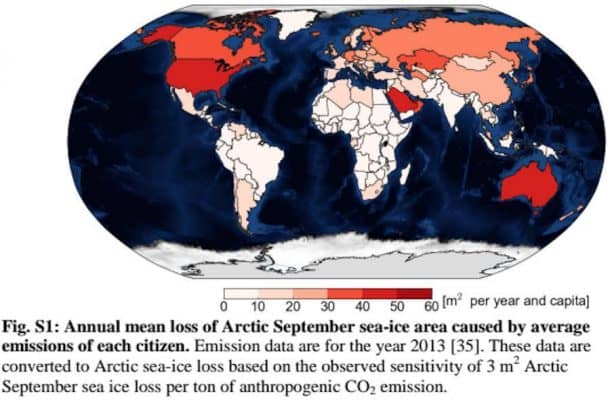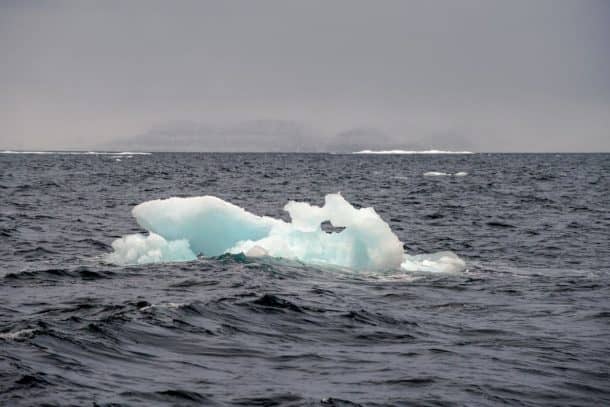A group of U.S.-German researchers have published a study which has concluded that a single trip from New York to Europe contributes to melting 32 square feet of Arctic sea ice.
This results in a cumulative melting of about 538 square feet of Arctic sea ice per annum by an American alone.
The study was published this week in the journal Science and is a first for creating a link between individual actions and the worrisome changes taking place in the Arctic.

The new study has confirmed the observation by the meteorologists that sea ice has declined to its second-lowest level ever this year. These claims have also been beefed up courtesy an observation by a sailing vessel which traversed the entire Northwest Passage without spotting a single chunk of sea ice in the ocean.
The report arrived at the conclusion after they figured out that about 3 square meters of summer sea ice melts in the Arctic for every metric tonne of carbon dioxide released by fuel burning. This relationship was used to calculate total ice melting resulting from our daily activities such as flying, driving, etc.
The paper has also devised a linear relationship between the amount of CO2 released and the long-term changes in the monthly sea ice area in the month of September.
Study co-author Dirk Notz, who is a senior researcher at the Max Planck Institute for Meteorology in Hamburg, Germany commented on his findings,
“We hope that this study will allow people to more intuitively grasp the mere fact that Arctic sea ice does not disappear because of some large-scale, anonymous action, but simply because of our little day-to-day activities. Hence, the loss of Arctic sea ice really is our shared responsibility, which then also implies that we have the means to slow down and eventually stop that ice loss, for example by following the Paris agreement.”
The ultimate conclusion of the study was that globally we need to maintain temperatures below 2 degrees Celsius, or 3.6 degrees Fahrenheit.
Sea ice expert at NASA’s Goddard Space Center, Walt Meier expressed his interest in the hypothesis that human activities are the direct factor behind the acceleration of ice loss over time.

Meier said in an email,
“This paper is further evidence against a tipping point and towards a more linear response. Of course, this is over the long-term — the paper looks at 30-year running means. Over the shorter term (several years), there is a lot of variabilities.”
He added,
“The linkage of specific carbon dioxide emissions to ice loss amounts is a new, albeit “highly simplified” visualisation of how human-caused climate change is reshaping the Arctic. Where this tying of [greenhouse gas emissions] to ice loss is probably most impactful is on policymakers and the general public.”
The study has come at a time when Marrakech, Morocco prepares to host the next round of U.N. climate negotiations on Nov. 7 which is expected to make more strict emission cuts on the industries and vehicles worldwide.


